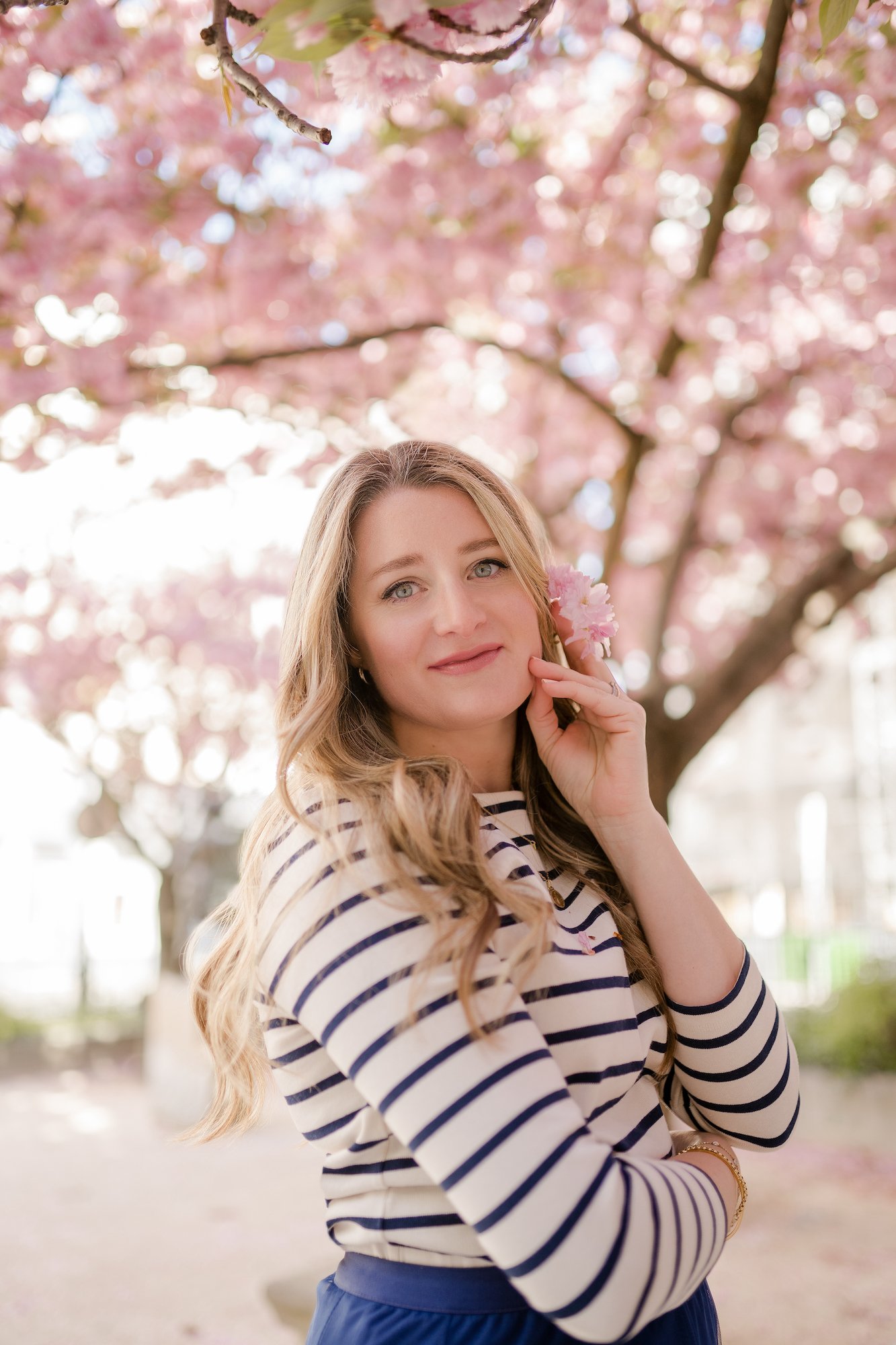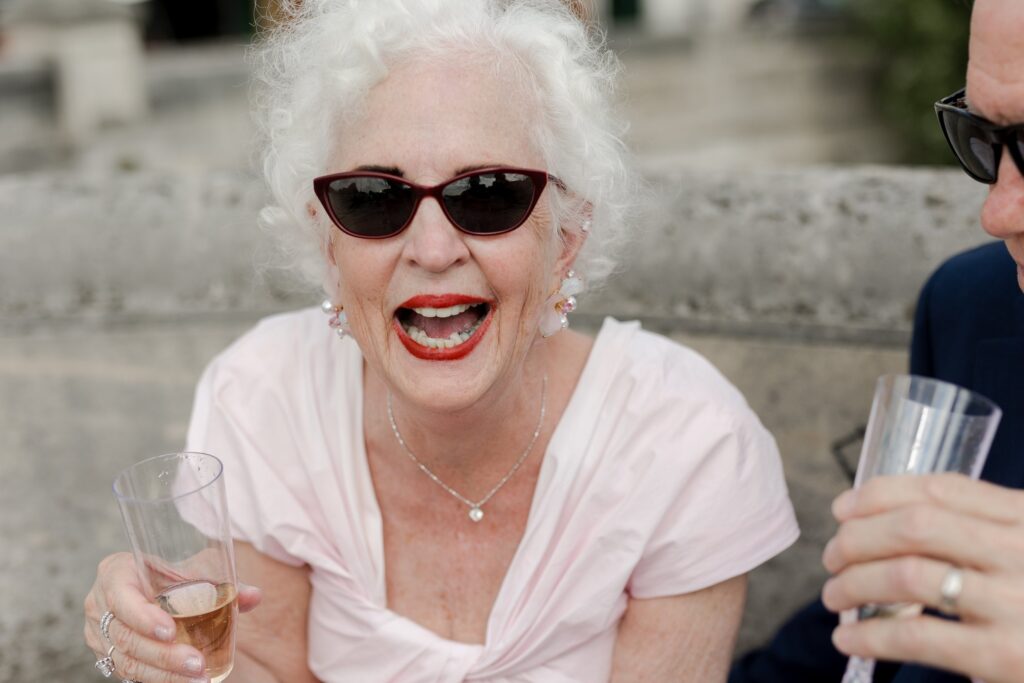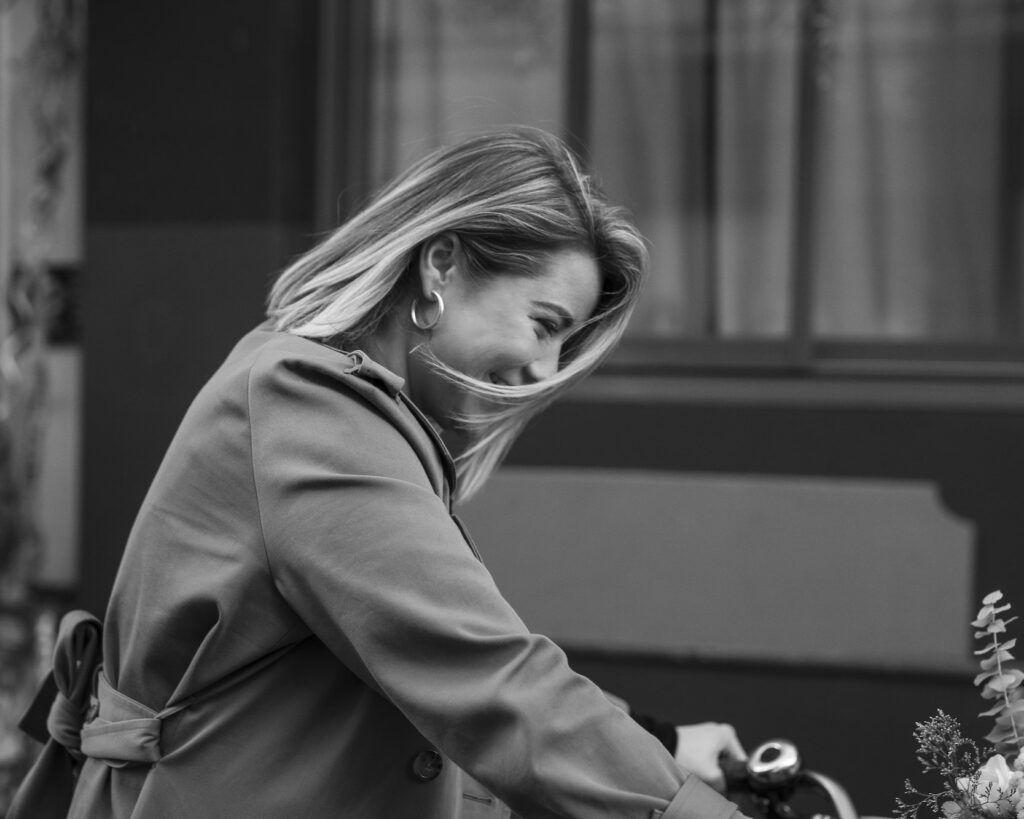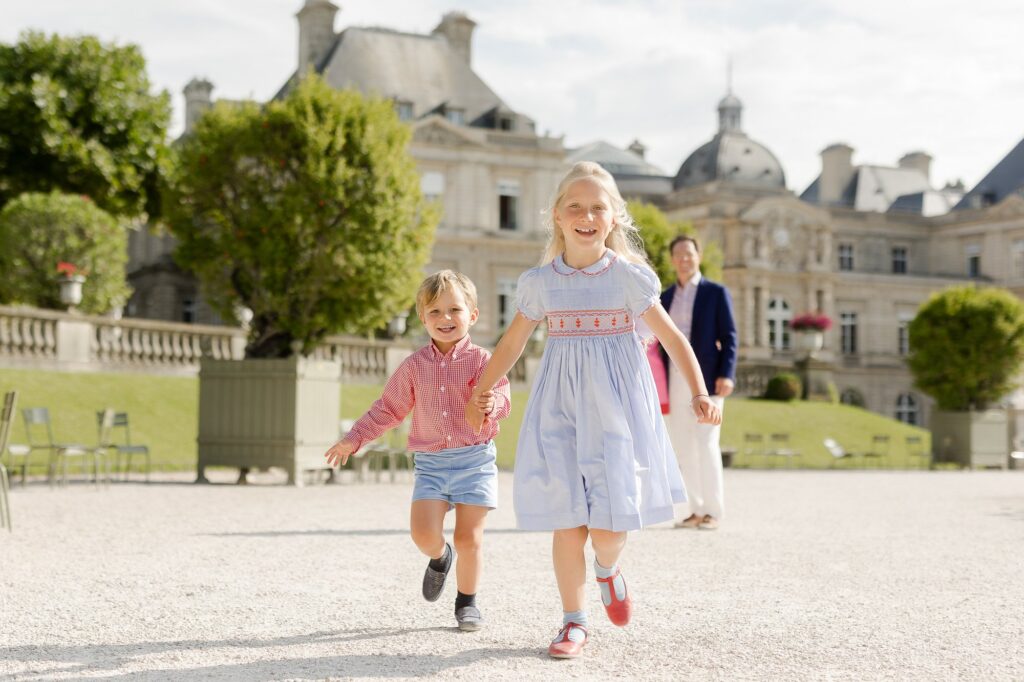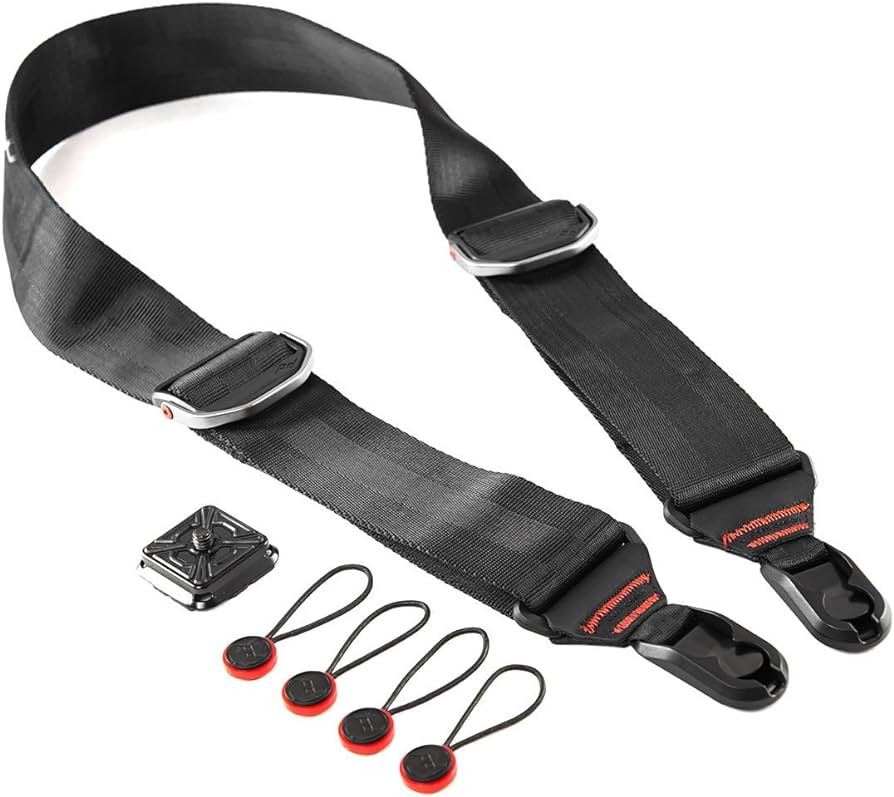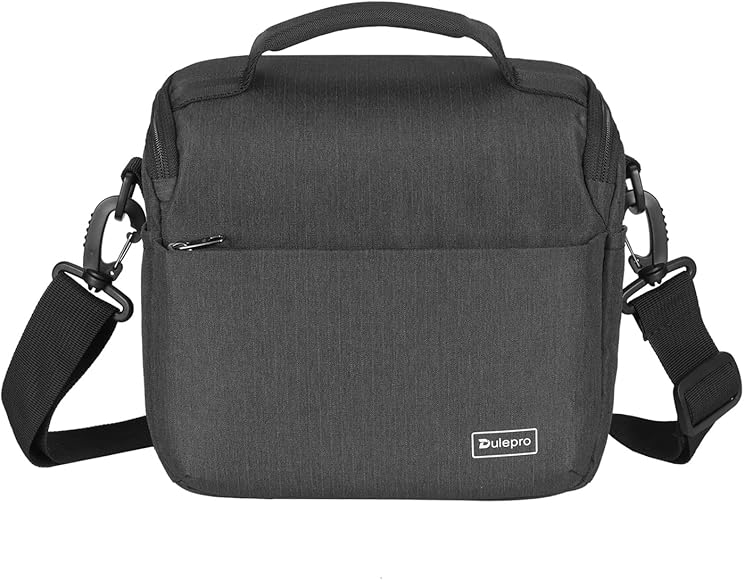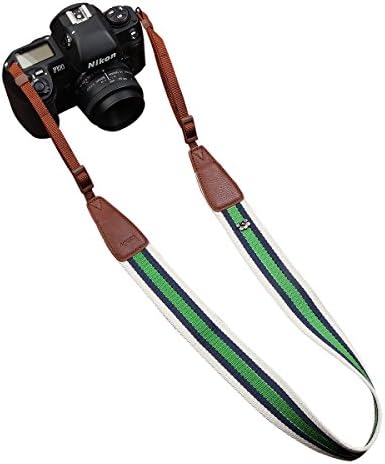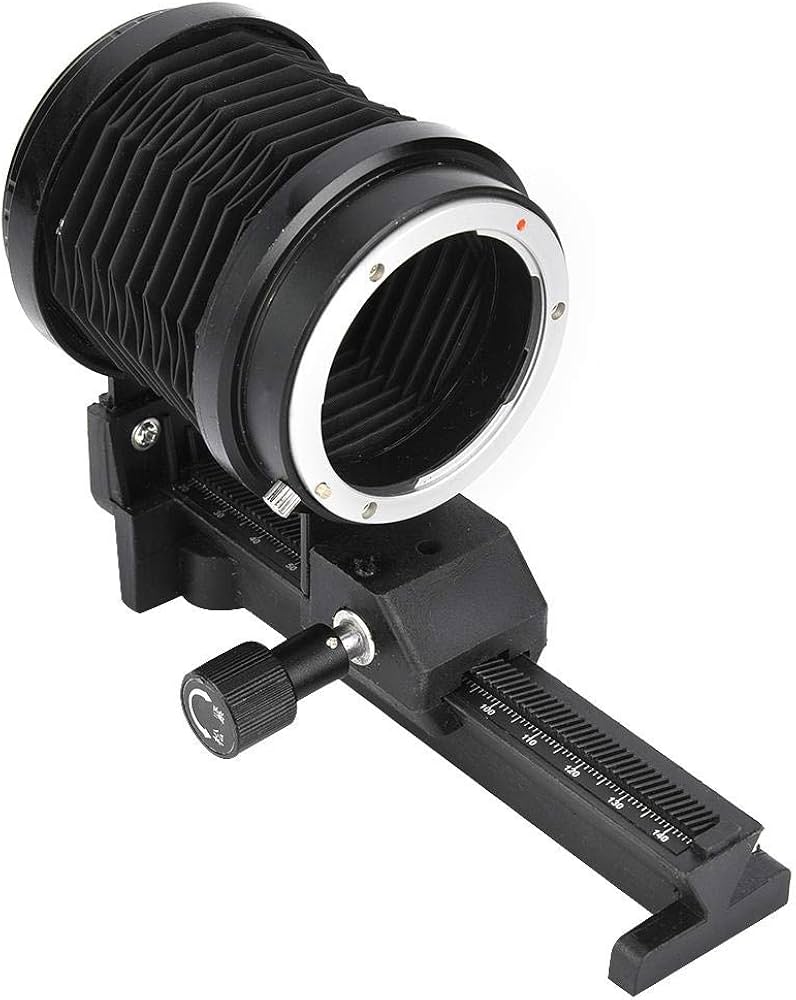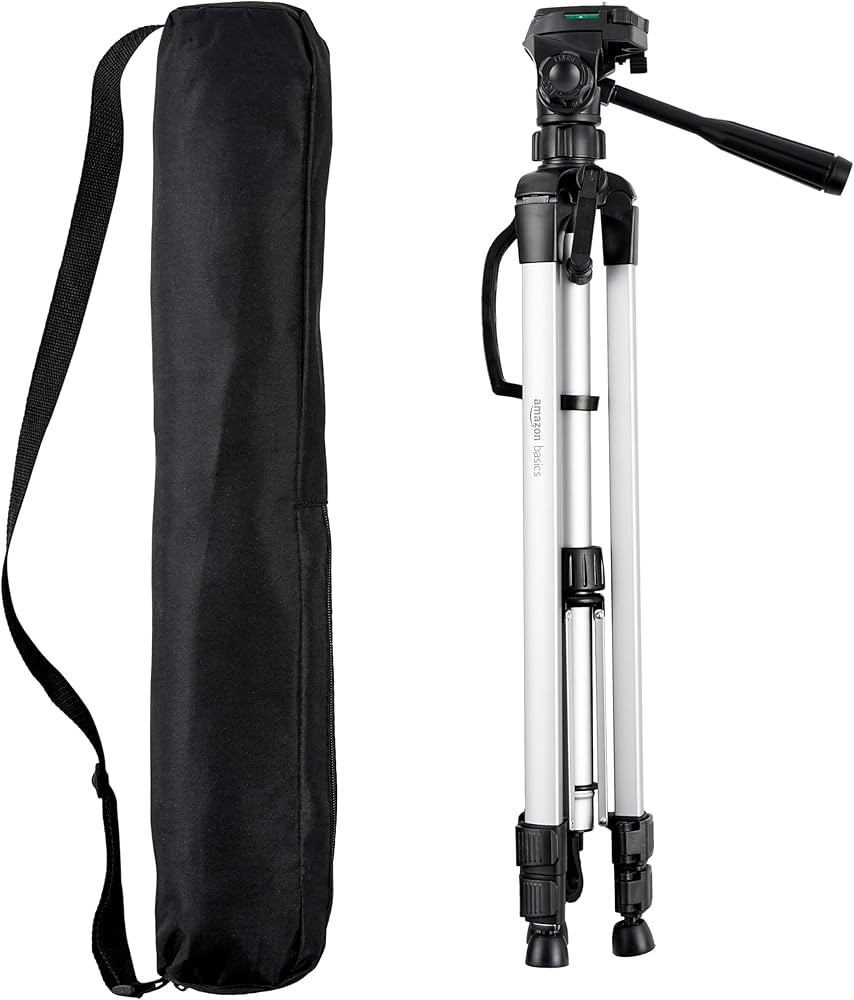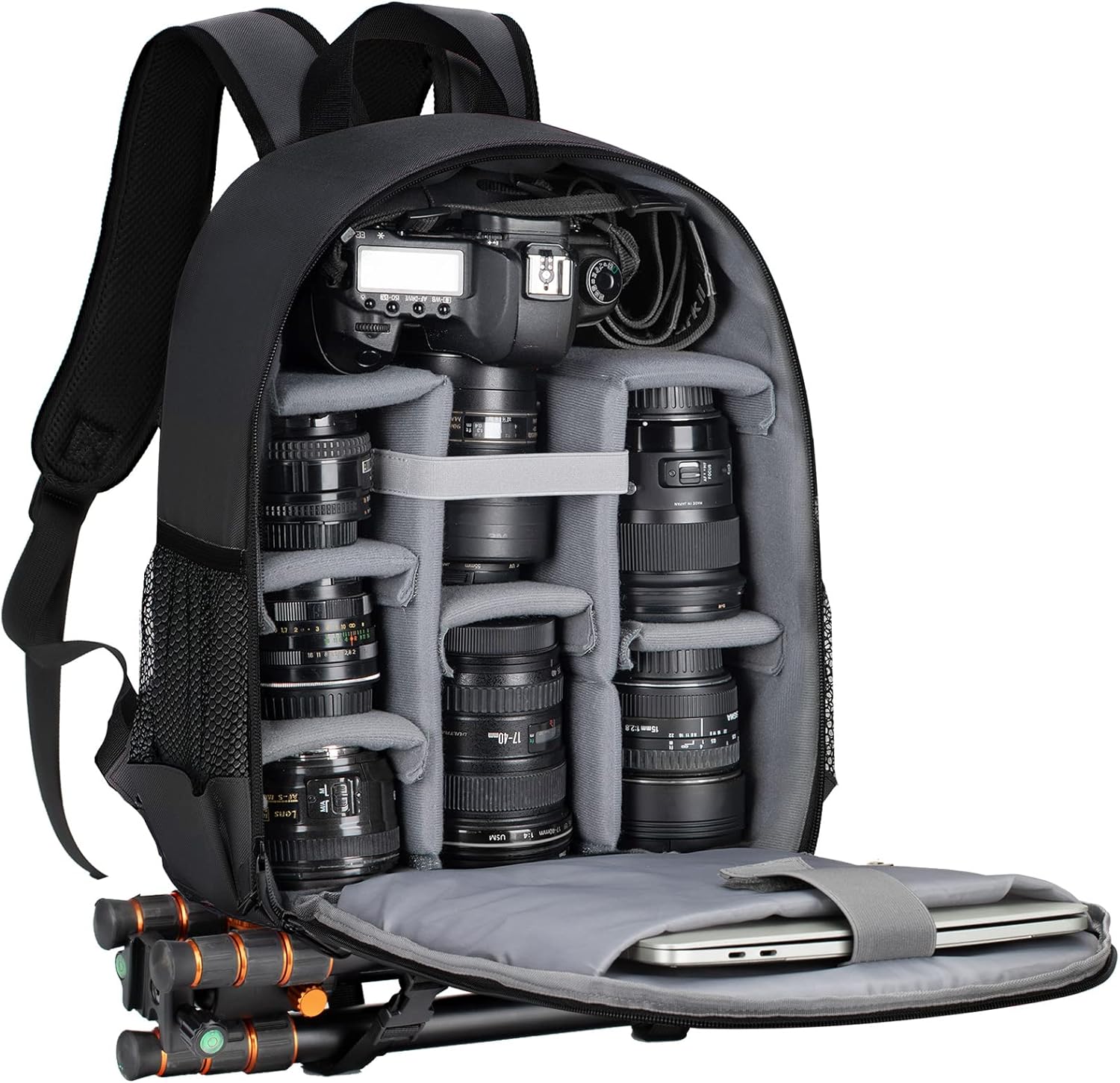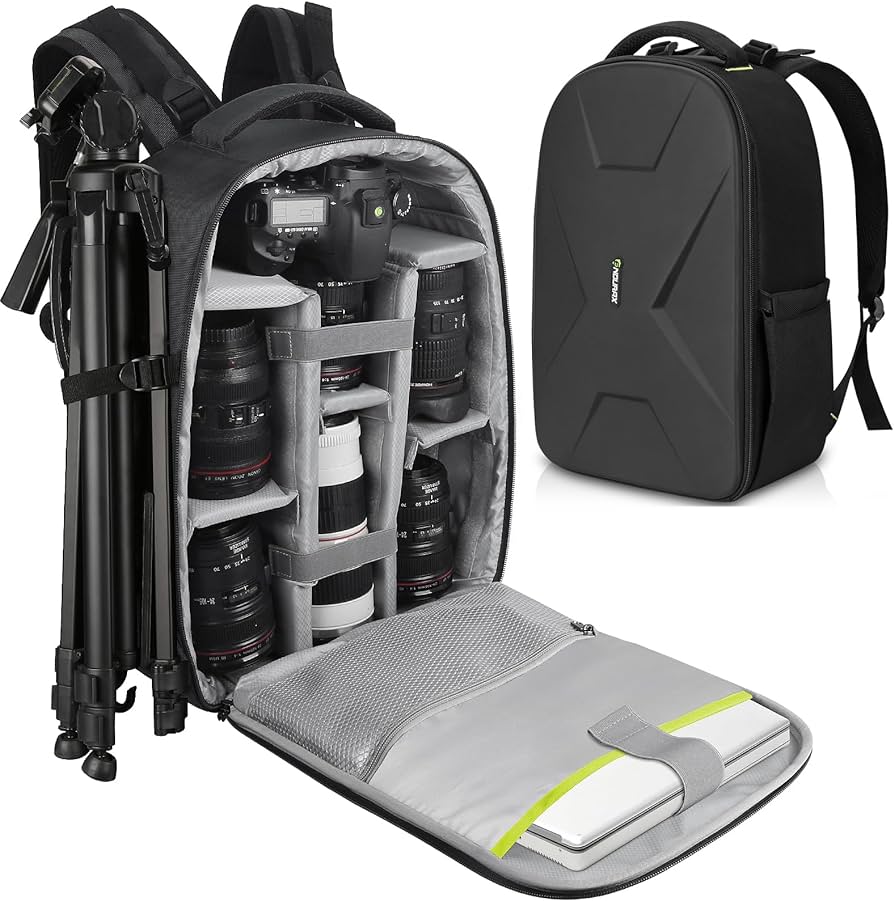Find the Right Light:
Lighting is everything in portrait photography. Natural light can work wonders, so consider shooting during the golden hours—early morning or late afternoon—when the light is soft and flattering. Lighting can be different in portraits than in landscape photography or fashion photography. So these helpful tips will be geared toward creating beautiful portraits of people…think professional headshots, studio portraits of family members, and outdoor candid portraits. It’s an art form, and the results will depend on how much time you devote to learning the nuances of image quality, camera settings, the color palette, and of course, artistic expression.
If you’re indoors, it’s a good idea to position your subject near a window to take advantage of natural light. Notice where the light source is and where the shadows fall and think about which features you would like illuminated and which ones you would like to be in the shadow. This is a good starting point for getting the best results in any type of photography.
At Katie Donnelly Photography, we do ALL of our outdoor photo sessions in the morning. Honestly, we don’t shoot any portraits in the afternoon or evening because there are too many people in the streets.
But this doesn’t mean you can’t shoot during the day. We’ve just found that shooting in the early morning is tried and true. It always looks SO good, no matter if it’s sunny or overcast. AND you often can’t tell it’s the early morning. The glow in our photos looks natural and as if it was taken at any point in the day. Plus, our clients feel fresh for the shoot right after they wake up and have time to get dressed and do makeup and/or hair beforehand.
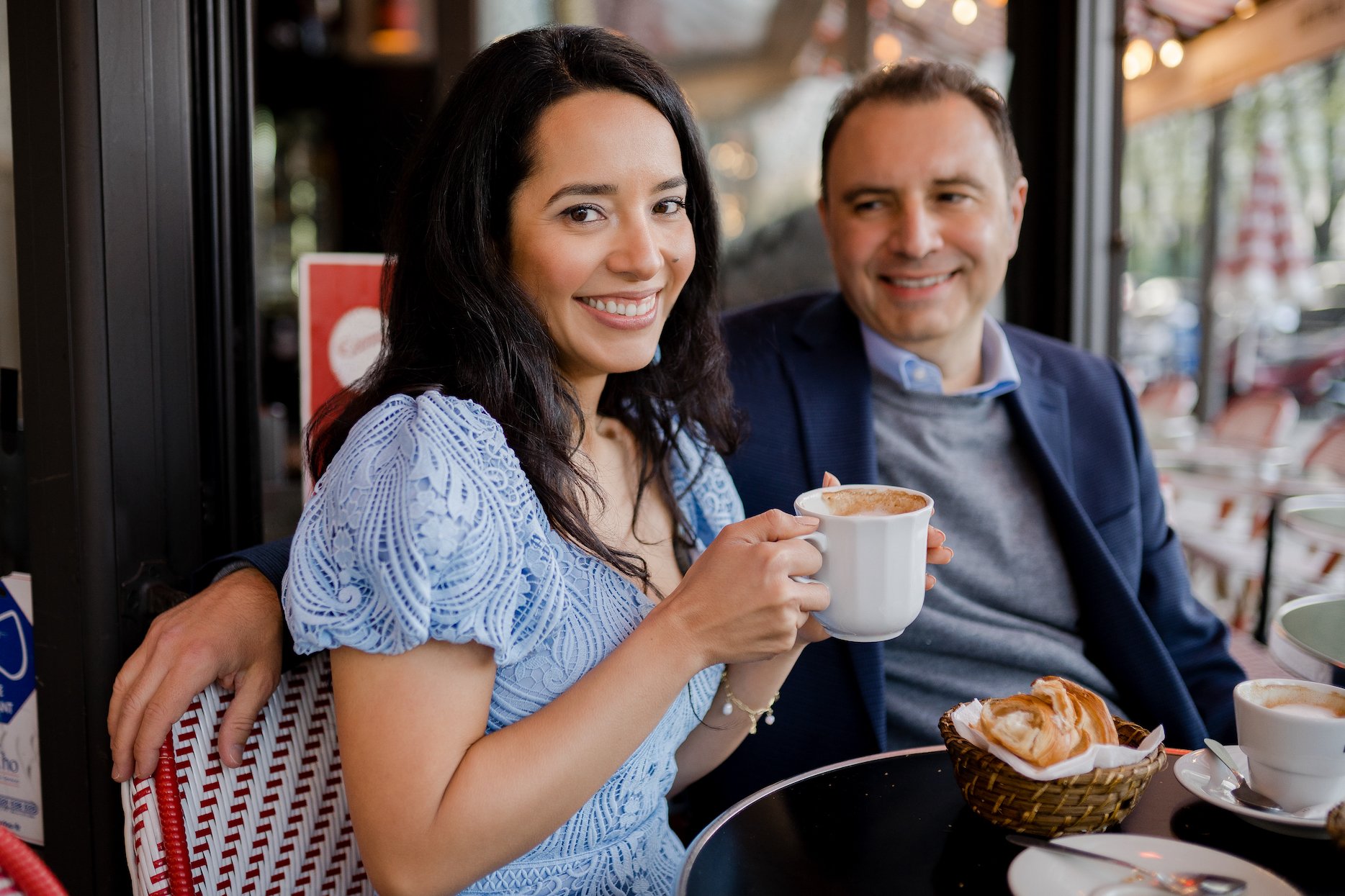
Get to Know Your Subject:
Building rapport with your subject is essential for capturing authentic portraits. Take the time to chat and make them feel comfortable in front of the camera. This will help bring out their natural expressions and personality.
This is one of my absolute favorite parts of being a professional portrait photographer. I LOVE getting to know my clients and learning their backstories. We always end up sharing anecdotes and laughing until our sides hurt. Photography is such an intimate experience that it can make strangers feel like friends in almost no time at all.
The relationship between photographer and subject definitely has an effect on how the photos turn out. The more comfortable you can make your subject feel, the more authentic and genuine the portraits will turn out. To me it feels like hanging out with good friends.
Experiment with Composition:
Don’t be afraid to play around with composition to add interest to your portraits. Try different angles, framing techniques, and perspectives to create visually dynamic images. Remember the rule of thirds but feel free to break it for creative effect!
Sometimes, clients come to us with specific visions for their shoot. We love collaborating on new ideas. This is how we grow as photographers and also how we can ensure our clients have a positive experience that they get to participate in.
Using props is super fun, or incorporating pets into your portrait session. We’ve had some amazing shoots with dogs, cats, and even pet turtles! Animals can add a whole new energy to a session and they usually have a calming effect on people. So, as long as the pets are well-behaved, they can be a great addition to a photo session.
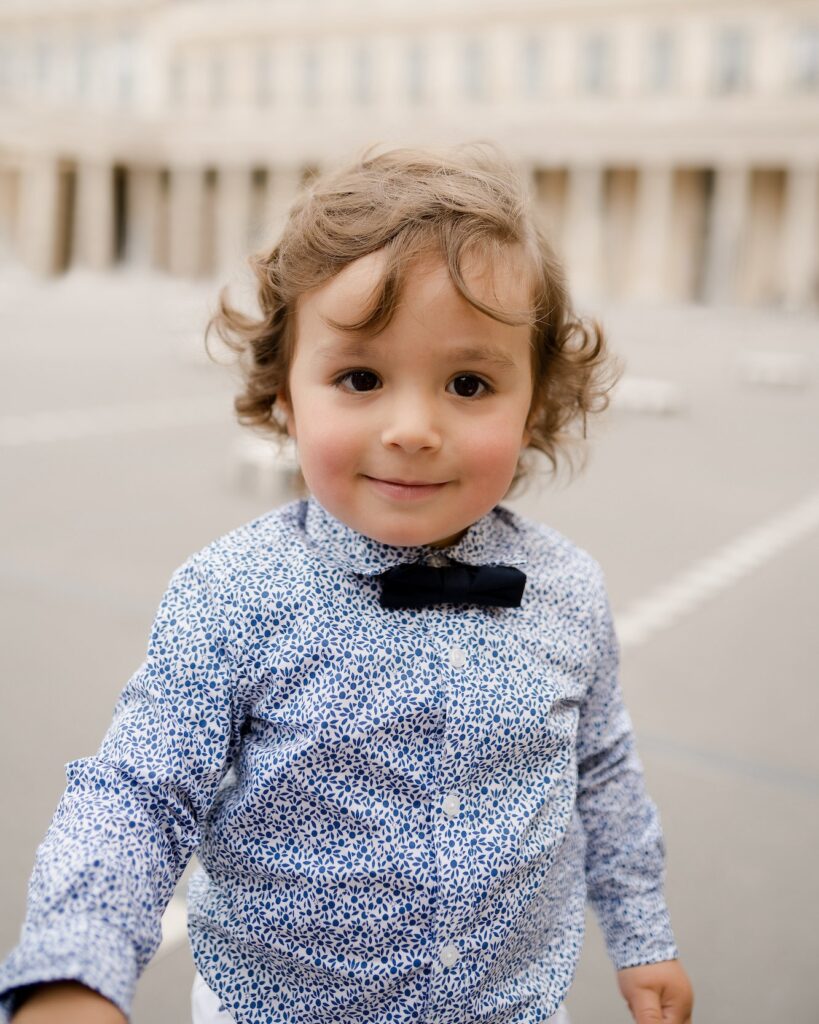
Focus on the Eyes:
The eyes are the windows to the soul, so make sure they’re in focus! When you’re experimenting with the camera’s settings, use a wide aperture (low f-stop number) to create a shallow depth of field and draw attention to your subject’s eyes. A sharp, well-focused gaze can make all the difference in a portrait.
Catchlights are reflections of light in your subject’s eyes, which add depth and sparkle. Position your subject so that catchlights appear naturally in their eyes. This can be achieved by positioning them near a window or using a reflector to bounce light into their eye.
Different lenses can create different effects on the eyes. Experiment with prime lenses with wide apertures (such as 50mm f/1.8 or 85mm f/1.4) to achieve a shallow depth of field and beautifully blurred background, which will make the eyes pop even more.
Remember to guide your subject to look directly into the camera lens. Direct eye contact can create a powerful connection with the viewer and make the eyes the focal point of the image.
Pay Attention to Backgrounds:
Keep an eye on your surroundings and choose backgrounds that complement your subject rather than distract from them. Look for simple, uncluttered backdrops that allow your subject to stand out.
When shooting around Paris, we love finding cobbled alleyways, green tree corridors, fountains, elegant architectural courtyards, and simple café fronts as locations. The backdrop is very dependent on the personality and style of the subject. We like taking requests from clients if they know where they want to shoot, but we also like recommending locations to clients who aren’t decided. Sometimes people like bold, iconic locations. And other people might prefer simpler backgrounds that draw less attention and serve to enhance the foreground.
If it’s winter, we generally stay away from parks (for obvious reasons), and tend to shoot in more of a street photography style. We can find beautiful old buildings year round or cozy storefronts and coffee shops to use as backgrounds. When the weather is warm in the spring and summer, we love taking advantage of all the blossoms and greenery. Ponds and fountains always look magical when it’s sunny, and gardens around Paris are usually in their prime. Even better if we can find flowers that match the color of our clients’ outfits, or at the very least, compliment it!
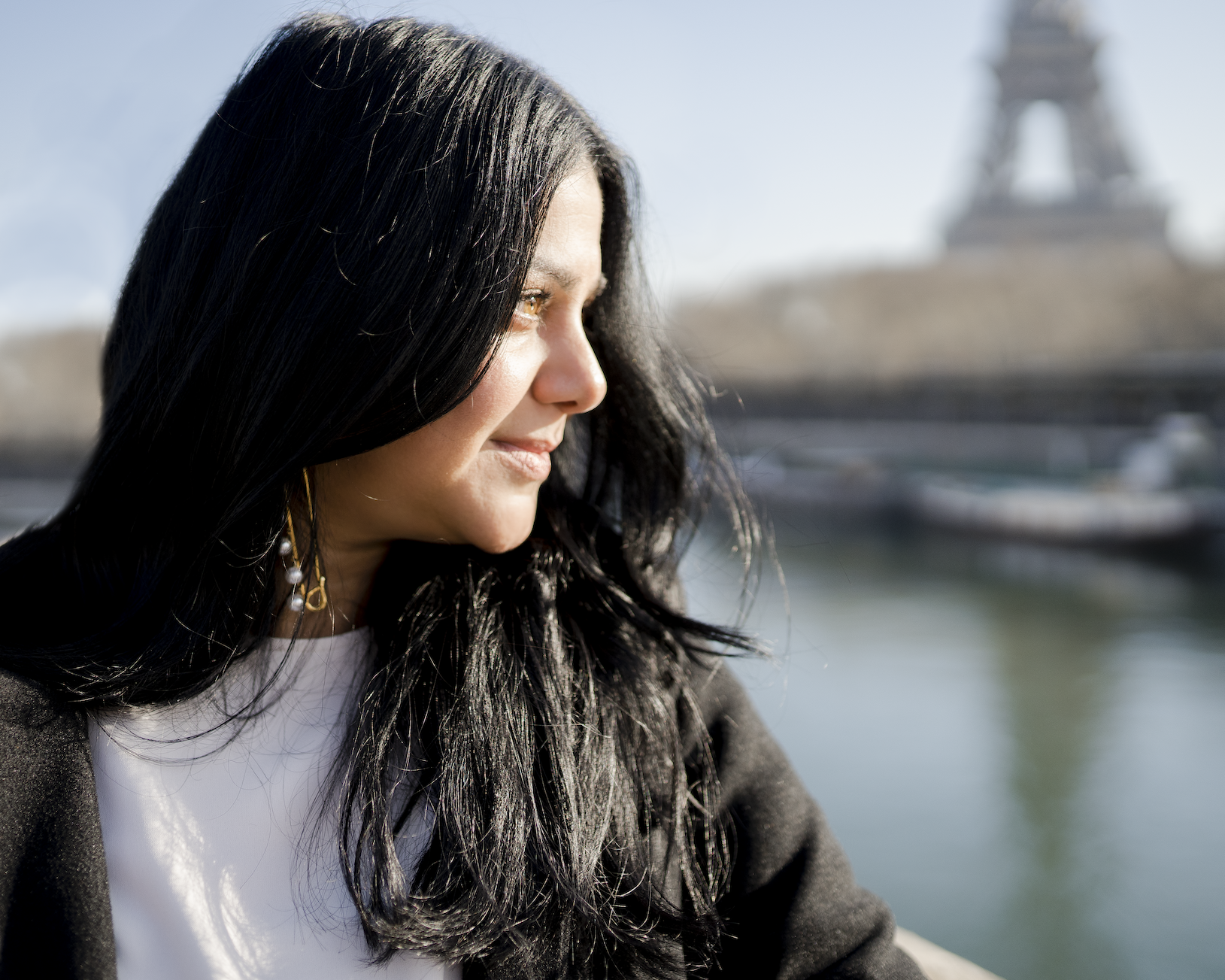
Capture Candid Moments:
While posed portraits have their charm, don’t underestimate the power of candid shots. Capture spontaneous moments and genuine emotions for portraits that feel authentic and alive.
This is especially easy if you are shooting two people at the same time. They’re bound to bring two different energies that interact in an interesting way. I recommend finding the moments when they forget about the camera and are focused instead on each other. You’ll love the result. They’ll love the result. It will just be natural and intimate, whether it’s a platonic shoot or a romantic shoot.
If you’re doing a solo portrait, you can also point out nearby objects or features to draw your subject’s attention to their surroundings. You can capture genuine reactions while they’re paying attention to something other than the camera.
I’ve done a portrait session at an outdoor market in Paris before…and I loved the result. I got so many lovely photos of my client picking out fruit and looking at the produce and just perusing. Would highly recommend experimenting with activities or distractions like this while shooting.
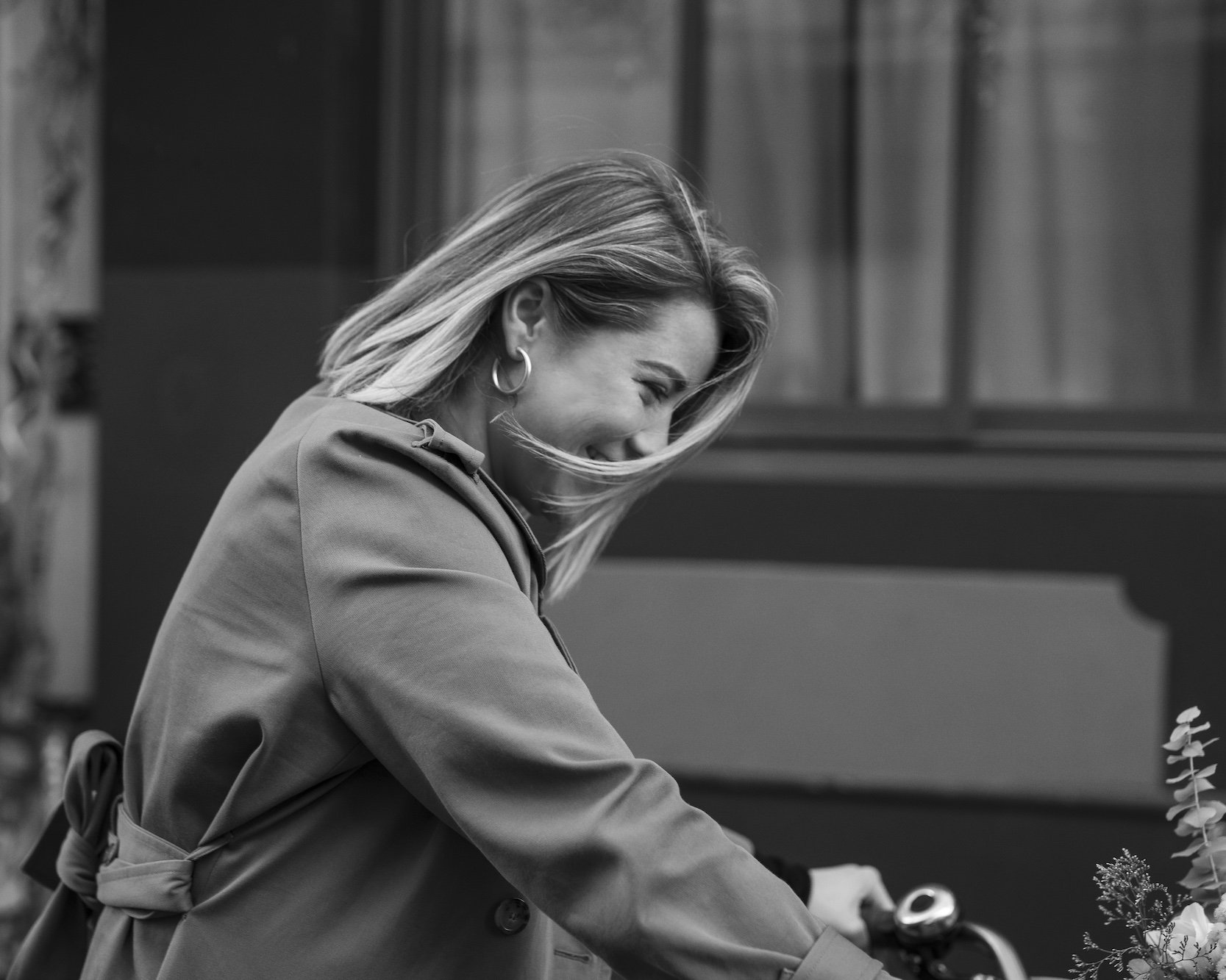
Like any skill, portrait photography takes practice to master. Don’t be discouraged by setbacks or imperfect shots—every click of the shutter is an opportunity to learn and improve.
Edit with Care:
Post-processing can enhance your portraits, but less is often more. Avoid over-editing and aim for a natural look. Experiment with adjustments to exposure, contrast, and color balance to enhance your images without losing their authenticity. Crop your image to improve composition and remove any distractions from the frame.
This is SO important: straighten the horizon line if needed to ensure your portrait looks balanced.
You can also use tools like the spot healing brush or clone stamp tool to remove blemishes and imperfections from your subject’s skin. Be subtle and aim for a natural look. I would not recommend going crazy with this feature, but it is an option if absolutely needed. I would really only advise doing it if your subject has specifically requested it or if there is something really distracting in the photo.
If necessary, you can apply sharpening and detailing to enhance the clarity of your portrait. Use the sharpening tool with caution to avoid introducing noise or artifacts.
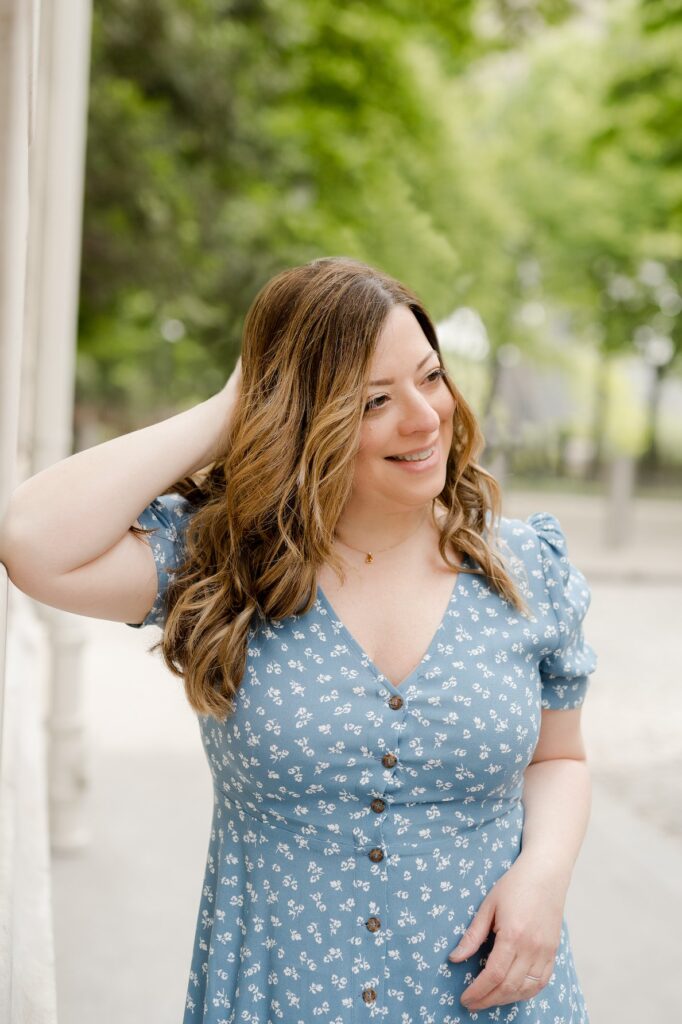
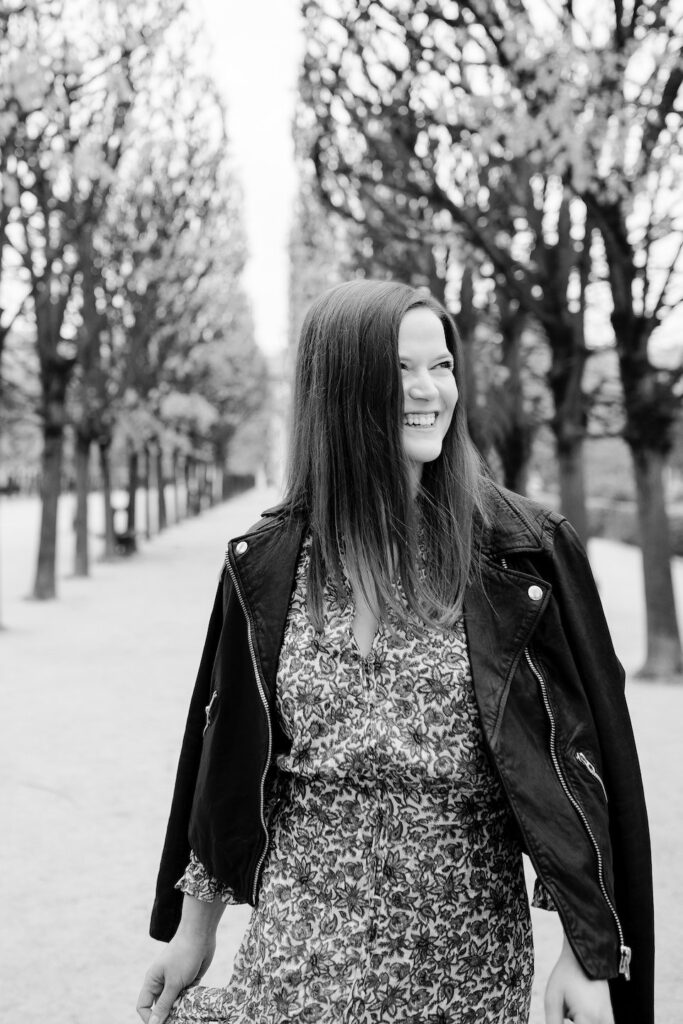
Fine-tune the tone and color of your portrait to achieve the desired mood and atmosphere. Experiment with adjustments like saturation, vibrance, and hue/saturation to enhance skin tones and overall color balance.
I recommend developing a consistent editing style that reflects your aesthetic preferences and enhances the overall look of your portraits. Pay attention to details and strive for a polished, professional finish. Oh and don’t forget to pay attention to what the raw format of your photo looks like. To take better portraits, it’s important to find the source of mistakes. Then maybe the next time you shoot, you won’t have to worry about exposure compensation or editing out bright sunlight, or even editing out that distracting group of people in the background.
Practice, Practice, Practice:
Like any skill, portrait photography takes practice to master. Don’t be discouraged by setbacks or imperfect shots—every click of the shutter is an opportunity to learn and improve.
I love just taking my camera out somewhere without a plan in mind. I’ll just wander around and shoot whatever inspires me. I’ve ended up with so many gems that way. Practicing like this, in a pressure-free environment is SO good for growth. You’ll start picking up information about lighting and proper camera techniques and angling, and all of this will help you when you’re asked to take a headshot for a friend or photograph a wedding reception or just capture your sweet family in their daily routines.
Seek Inspiration:
Draw inspiration from other photographers, both classic and contemporary. Study their work, analyze what makes their portraits stand out, and incorporate elements of their style into your own photography.
Some great tools for inspiration are Pinterest, Instagram, and any other visually-based social media platform. I’m always looking for new ideas to incorporate into my photography, and there’s always someone in the world who has tried something you’ve never thought of. I think Pinterest and Instagram are two of the best ways to get quick inspiration for shoot styles and even outfit ideas. I really like exploring different types of portrait photography and I feel like social media is a gold mine of creativity if you know where to look!
If you’re more of an analog person, you can also find lots of photography books at local bookstores and libraries. Flipping through a physical book of printed professional photography is SUCH an enjoyable way to spark creativity. I love the intention behind it and the photos will probably stick in your mind easier than if you’re scrolling on your phone. That’s just how attention spans work. Either way, you can’t go wrong.
Go to art museums, even. See photography exhibitions. There are so many cultural events worth checking out, and you might even meet other friendly people who are also passionate about photography! Talk to them, exchange ideas, make plans to take photos together!
Have Fun with It:
Last but not least, remember to have fun! Obviously, this isn’t a technical bit of advice but it is the MOST important thing!
Portrait photography is a creative outlet, so don’t be afraid to experiment, take risks, and enjoy the process of capturing beautiful moments. Not every photo will turn out. In fact, you’ll probably end up throwing out most of the photos in the beginning. Sometimes only 1 amazing photo will come out of 100 photos. And that’s totally fine! If you can get one great portrait, then it was worth it, just keep going. You’ll get better!
The more you practice, the more you will find a rhythm, improve your technical and interpersonal skills, and develop an artistic eye. As this progress happens, you’ll notice your amount of successful photos will increase. And before you know it, you’ll have too many photos to know what to do with! But hey, there are worse problems.
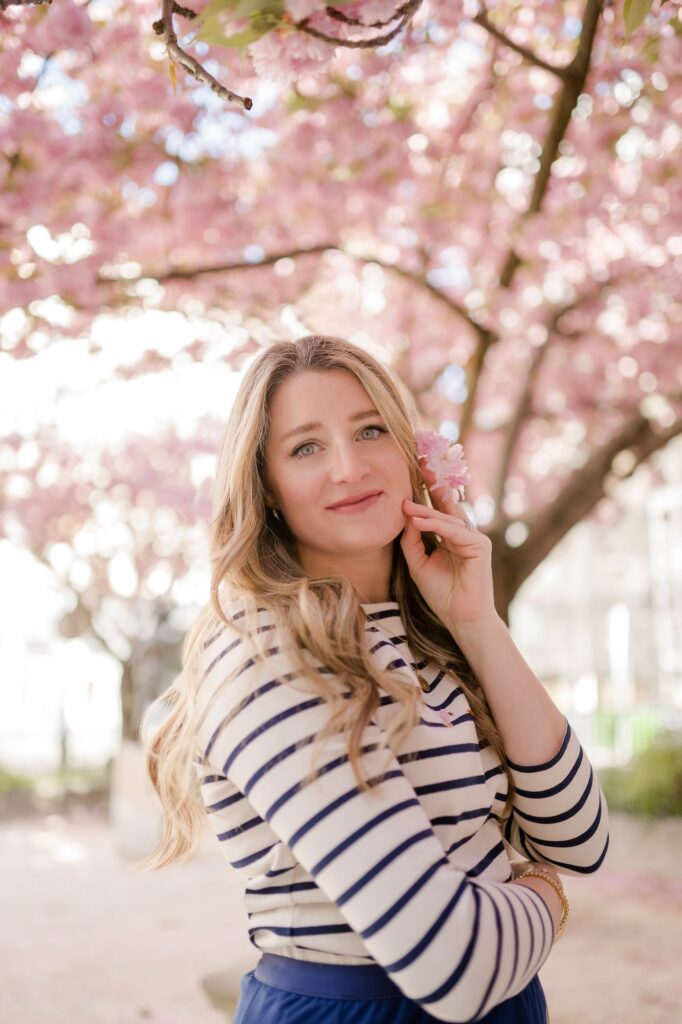
So anyways, just embrace the process. It’s hard not to get immediate results, especially when we try a new skill. But I would recommend being patient with yourself and with all the little mistakes and learning opportunities along the way. I can confidently say that every single portrait session I’ve ever done has been worth it. I don’t regret any part of the journey.
So there you have it—some insider tips to help you kickstart your own journey into the wonderful world of portrait photography. Remember, the most important thing is to keep shooting and exploring your own unique style.
Ready to book your family portrait or solo session with a professional couple photographer in Paris? Contact us HERE to schedule your unforgettable Paris portrait experience!

